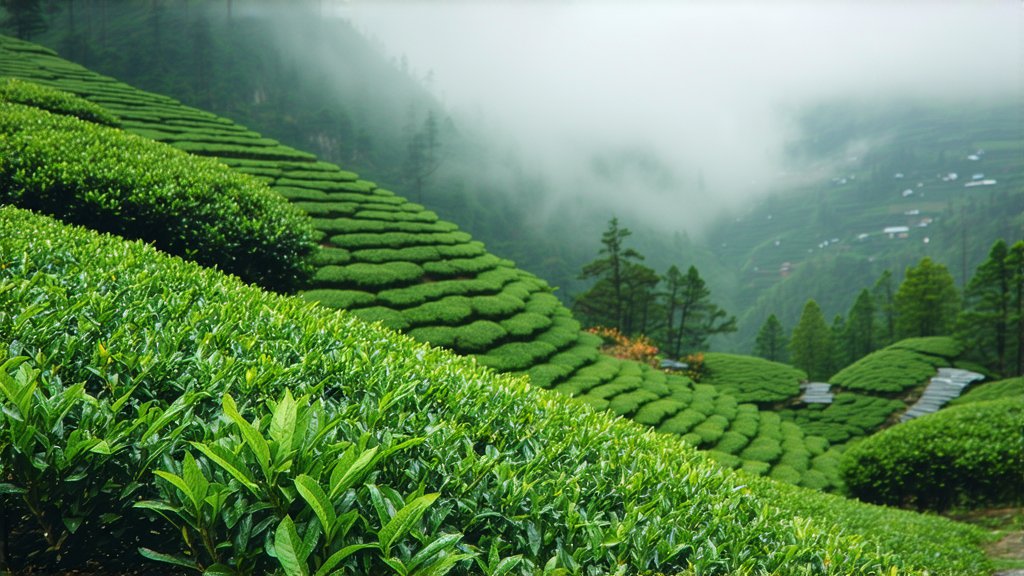
In the lush landscapes of Fujian Province, nestled within the verdant expanse of the Wuyi Mountains, lies a treasure that has been cherished by tea connoisseurs for centuries—Tieguanyin. This exquisite variety of Oolong tea, also known as the "Iron Goddess of Mercy," is not merely a beverage but an experience, steeped in history and tradition. Join me on a journey through the origins, varieties, artisanal craftsmanship, and nuanced appreciation of Tieguanyin, as we unravel the intricate tapestry that binds this tea to Chinese culture.
Historical Roots: A Legacy Brewed
The tale of Tieguanyin begins in the early Qing Dynasty, around the late 18th century, amidst the picturesque Anxi region. Legend has it that a poor scholar named Wang discovered this extraordinary tea when a divine vision led him to a wild tea bush growing near a temple dedicated to Guanyin, the Goddess of Mercy. He propagated cuttings from this mystical plant, which eventually became the progenitor of what we now know as Tieguanyin. Its name, translating to "Iron Goddess of Mercy," reflects both its robust character and the compassionate deity who blessed its creation.
Varieties: A Symphony of Flavors
Tieguanyin encompasses a range of sub-varieties, each with its unique flavor profile and aromatic fingerprint. The most renowned among them include:
- Xiangxiang Tieguanyin: Known for its floral fragrance reminiscent of orchids and magnolias, this variety captivates the senses with its sweet, lingering scent.
- Ruixiang Tieguanyin: Often referred to as "milky fragrance," Ruixiang boasts a creamy, buttery aroma with hints of roasted nuts, making it a favorite among those seeking a smoother taste.
- Da Hong Pao: Though technically a different Oolong tea, Da Hong Pao shares similarities with Tieguanyin due to its cultivation in nearby Wuyi Mountains. It offers a rich, complex flavor profile with notes of earthiness, caramel, and a distinctive rock-like minerality.
Artisanal Craftsmanship: From Leaf to Cup
The magic of Tieguanyin lies not only in its genetic makeup but also in the meticulous process by which it is crafted. Here’s a glimpse into the traditional steps involved:
- Plucking: Only the tenderest shoots and leaves are handpicked, ensuring optimal freshness and quality.
- Withering: Fresh leaves are spread out under the sun or indoors to reduce moisture content gradually, allowing enzymes to initiate oxidation.
- Fixation: The leaves undergo high-heat fixation in a wok or roaster to halt oxidation, preserving their vibrant green color and locking in flavors.
- Rolling: Leaves are gently rolled to shape them and further break down cell walls, facilitating better extraction during brewing.
- Oxidation: Controlled oxidation takes place, where the leaves are left to rest, allowing polyphenols to interact with oxygen, contributing to the tea’s unique flavor and aroma.
- Roasting: Depending on the desired outcome, Tieguanyin may be lightly or heavily roasted, enhancing its complexity and depth.
- Sorting & Grading: Finally, the tea is sorted based on leaf size and quality, ensuring consistency in every batch.
Savoring the Elixir: A Sensory Journey
To truly appreciate Tieguanyin, one must engage all senses in the art of tea ceremony:
- Visual Appreciation: Observe the tight spirals of dry leaves unfurling gracefully in hot water, revealing their jade hue.
- Aromatic Exploration: Inhale deeply before sipping to capture the tea’s bouquet, whether it be floral, fruity, or creamy.
- Tasting Ritual: Take small sips, allowing the tea to coat your palate. Notice the balance between sweetness, bitterness, and umami, along with the tea’s mouthfeel.
- Aftertaste Reflection: Pay attention to the lingering aftertaste and how it evolves over multiple infusions, reflecting the tea’s longevity and complexity.
Cultural Significance: More Than Just a Beverage
Beyond its sensory pleasures, Tieguanyin holds profound cultural significance in Chinese society. It symbolizes harmony, tranquility, and the philosophy of living in balance with nature. Tea ceremonies centered around Tieguanyin foster social bonds, deepen friendships, and offer moments of introspection and mindfulness. Moreover, its presence in diplomatic gift exchanges underscores its status as a national treasure and a symbol of goodwill.
In conclusion, Tieguanyin stands as a testament to China's rich tea heritage, embodying the perfect blend of artistry, tradition, and nature's bounty. As you embark on your own exploration of this enchanting tea, remember that each cup tells a story—a narrative woven from centuries of history, the hands of skilled artisans, and the whispers of ancient mountains. So sit back, relax, and let the Iron Goddess of Mercy transport you to a realm where time slows down, and every sip is a journey into the heart of Chinese tea culture.